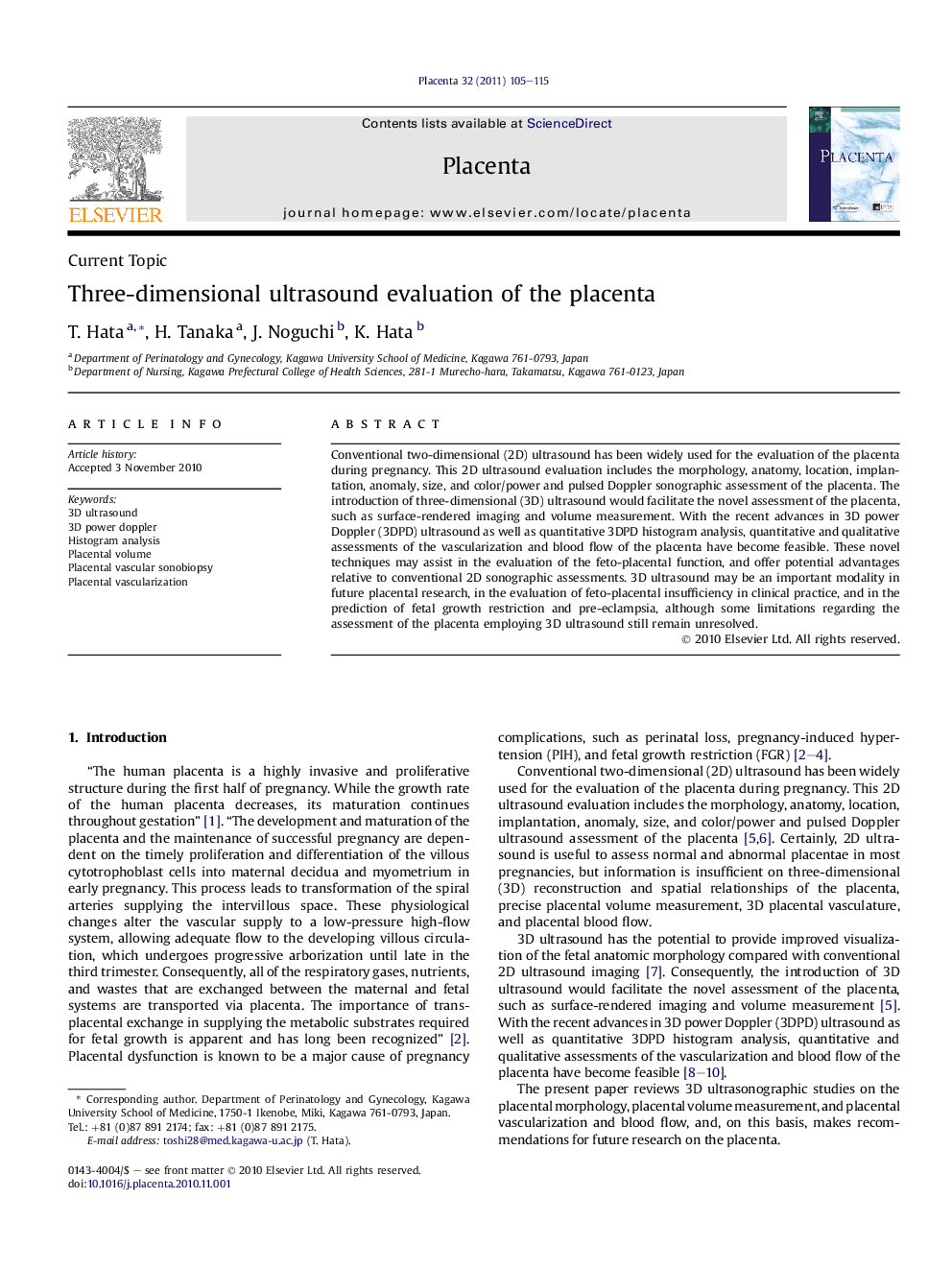| کد مقاله | کد نشریه | سال انتشار | مقاله انگلیسی | نسخه تمام متن |
|---|---|---|---|---|
| 5896000 | 1154504 | 2011 | 11 صفحه PDF | دانلود رایگان |

Conventional two-dimensional (2D) ultrasound has been widely used for the evaluation of the placenta during pregnancy. This 2D ultrasound evaluation includes the morphology, anatomy, location, implantation, anomaly, size, and color/power and pulsed Doppler sonographic assessment of the placenta. The introduction of three-dimensional (3D) ultrasound would facilitate the novel assessment of the placenta, such as surface-rendered imaging and volume measurement. With the recent advances in 3D power Doppler (3DPD) ultrasound as well as quantitative 3DPD histogram analysis, quantitative and qualitative assessments of the vascularization and blood flow of the placenta have become feasible. These novel techniques may assist in the evaluation of the feto-placental function, and offer potential advantages relative to conventional 2D sonographic assessments. 3D ultrasound may be an important modality in future placental research, in the evaluation of feto-placental insufficiency in clinical practice, and in the prediction of fetal growth restriction and pre-eclampsia, although some limitations regarding the assessment of the placenta employing 3D ultrasound still remain unresolved.
Journal: Placenta - Volume 32, Issue 2, February 2011, Pages 105-115